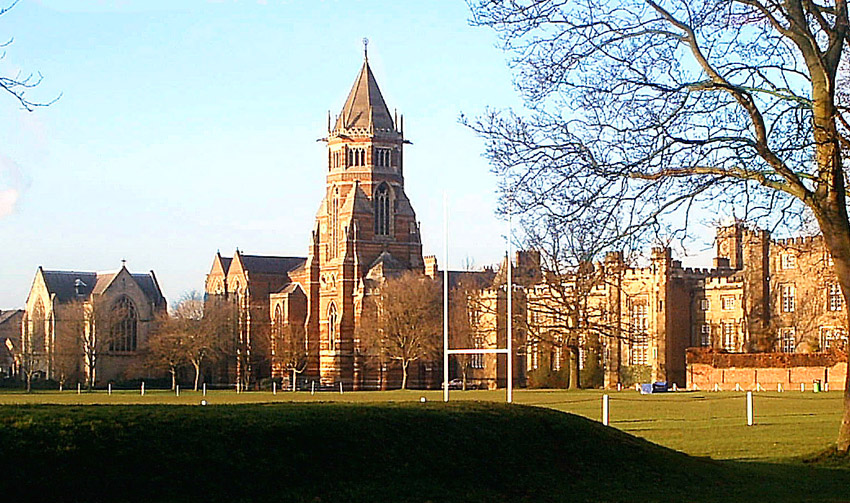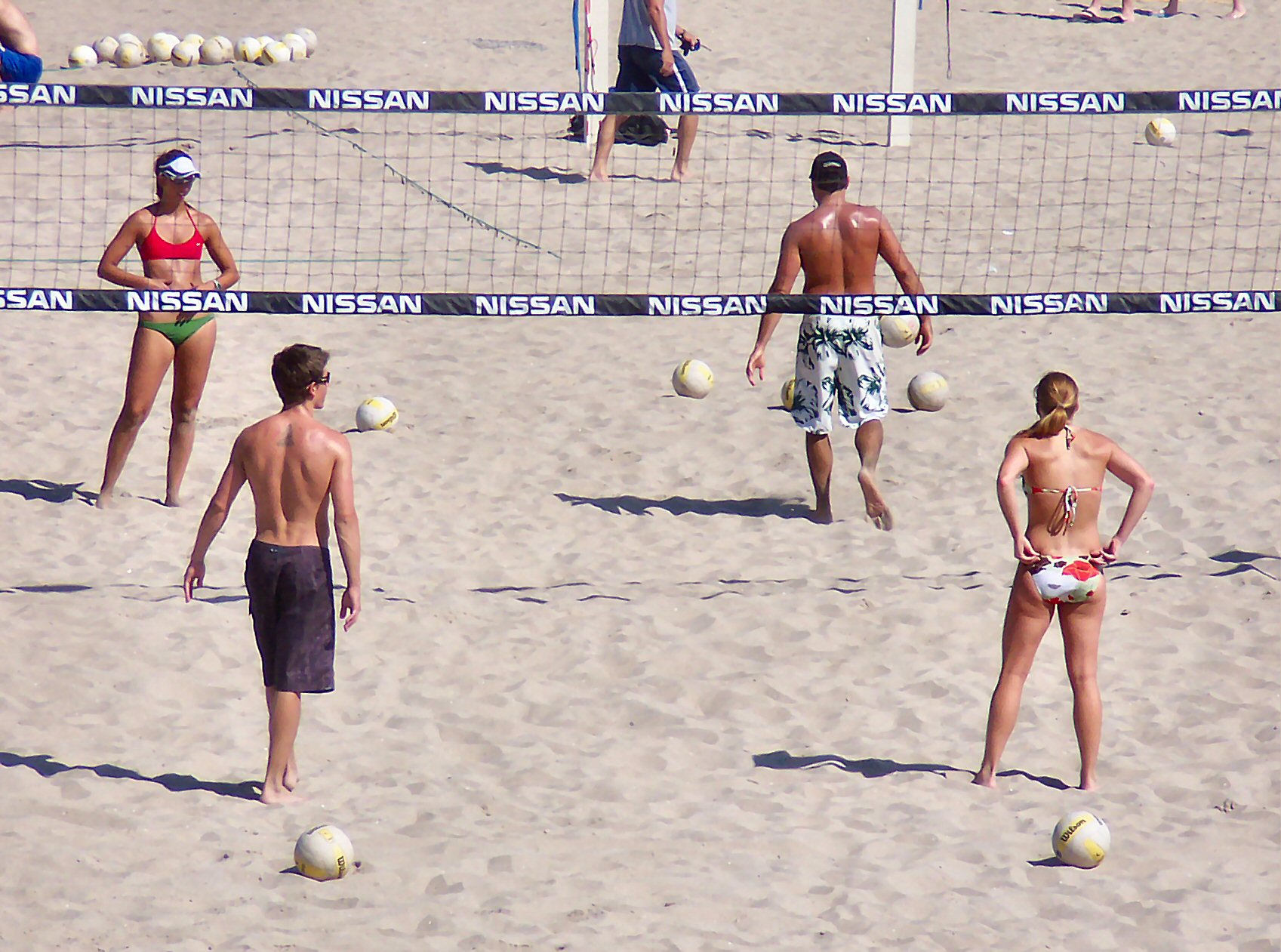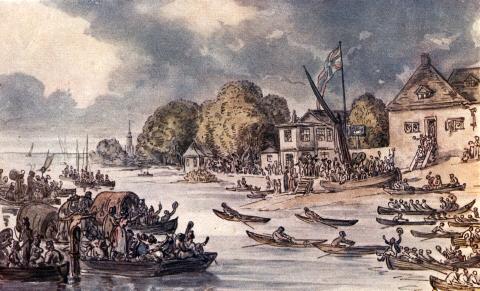|
Rowing Crew
Rowing, often called crew in the United States, is the sport of racing boats using oars. It differs from paddling sports in that rowing oars (called blades in the United Kingdom) are attached to the boat using rowlocks, while paddles are not connected to the boat. Rowing is divided into two disciplines: sculling and sweep rowing. In sculling, each rower (or oarsman) holds two oars, one in each hand, while in sweep rowing each rower holds one oar with both hands. There are several boat classes in which athletes may compete, ranging from single sculls, occupied by one person, to shells with eight rowers and a coxswain, called eights. There are a wide variety of course types and formats of racing, but most elite and championship level racing is conducted on calm water courses long with several lanes marked using buoys. Modern rowing as a competitive sport can be traced to the early 17th century when professional watermen held races (regattas) on the River Thames in London, En ... [...More Info...] [...Related Items...] OR: [Wikipedia] [Google] [Baidu] |
Eight (rowing)
An eight, abbreviated as an 8+, is a racing shell used in competitive rowing (crew). It is designed for eight rowers, who propel the boat with sweep oars, and is steered by a coxswain, or "cox". Each of the eight rowers has one oar. The rowers sit in a line in the centre of the boat and face the stern. They are usually placed alternately, with four on the port side (rower's right hand side – also traditionally known as "stroke side") and four on the starboard side (rower's lefthand side – known as "bow side"). The cox steers the boat using a rudder and is normally seated at the stern of the boat. Because of the size, weight, and speed of the boat in comparison to the 4+ and 2+, it is generally considered unsafe to race the 8+ coxless or to have a bowloader cox. Racing boats (often called "shells") are long, narrow, and broadly semi-circular in cross-section in order to reduce drag to a minimum. Originally made from wood, shells are now almost always made from a compo ... [...More Info...] [...Related Items...] OR: [Wikipedia] [Google] [Baidu] |
Oar (sport Rowing)
In rowing (sport), rowing, oars are used to propel the boat. Oars differ from paddles in that they use a fixed or sliding Fulcrum (mechanics), fulcrum, an oarlock or rowlock attached to the side of the boat, to transfer power from the handle to the blade, rather than using the athlete's shoulders or hands as the pivot-point as in canoeing and kayaking. When the rower uses one oar on one side, it is called ''sweep'' rowing that the single oar is called a "sweep" oar. When the rower uses two oars at the same time, one on each side, it is called sculling, and the two oars are called a pair of "sculls". Typical sculls are around 284 cm - 290 cm in length — sweep oars are 370 cm - 376 cm. A scull has a smaller blade area, as each rower wields a pair of them at any one time, operating each with one hand. Since the 1980s many oars have been adjustable in length. The shaft of the oar ends with a thin flat surface 40 to 50 cm long and 25 cm wide, var ... [...More Info...] [...Related Items...] OR: [Wikipedia] [Google] [Baidu] |
Public School (United Kingdom)
A public school in England and Wales is a type of fee-charging Private schools in the United Kingdom, private school originally for older boys. The schools are "public" from a historical schooling context in the sense of being open to pupils irrespective of locality, Christian denomination, denomination or paternal trade guild, trade or profession or family affiliation with governing or military service, and also not being run for the profit of a private owner. Although the term "public school" has been in use since at least the 18th century, its usage was formalised by the Public Schools Act 1868 (31 & 32 Vict. c. 118), which put into law most recommendations of the 1864 Clarendon Report. Nine prestigious schools were investigated by Clarendon (including two day schools, Merchant Taylors' School, Northwood, Merchant Taylors' and St Paul's School, London, St Paul's) and seven subsequently reformed by the Act: Eton College, Eton, Shrewsbury School, Shrewsbury, Harrow School, Ha ... [...More Info...] [...Related Items...] OR: [Wikipedia] [Google] [Baidu] |
Amateurism In Sport
Amateur sports are sports in which participants engage largely or entirely without remuneration. The distinction is made between amateur sporting participants and professional sports, professional sporting participants, who are paid for the time they spend competing and training. In the majority of sports which feature professional players, the professionals will participate at a higher standard of play than amateur competitors, as they can train full-time without the stress of having another job. The majority of worldwide sporting participants are amateurs. Sporting amateurism was a zealously guarded ideal in the 19th century, especially among the upper classes, but faced steady erosion throughout the 20th century with the continuing growth of pro sports and monetisation of amateur and collegiate sports, and is now strictly held as an ideal by fewer and fewer organisations governing sports, even as they maintain the word "amateur" in their titles. Background Modern organized spo ... [...More Info...] [...Related Items...] OR: [Wikipedia] [Google] [Baidu] |
Livery Companies
A livery company is a type of guild or professional association that originated in medieval times in London, England. Livery companies comprise London's ancient and modern trade associations and guilds, almost all of which are Style (form of address), styled the "Worshipful Company of" their craft, trade or profession. There are 113 livery companies as at March 2025. They play a significant part in the life of the City of London, not least by providing charitable-giving and networking opportunities. Liverymen retain voting rights for the senior Official, civic offices, such as the Lord Mayor of London, Lord Mayor, Sheriffs of London, Sheriffs and Court of Common Council, Common Council of the City of London Corporation, City Corporation, London's ancient Municipal corporation, municipal authority with extensive local government powers. The term ''livery'' originated in the designed form of dress worn by Affinity (medieval), retainers of a nobleman and then by extension to Unif ... [...More Info...] [...Related Items...] OR: [Wikipedia] [Google] [Baidu] |
London
London is the Capital city, capital and List of urban areas in the United Kingdom, largest city of both England and the United Kingdom, with a population of in . London metropolitan area, Its wider metropolitan area is the largest in Western Europe, with a population of 14.9 million. London stands on the River Thames in southeast England, at the head of a tidal estuary down to the North Sea, and has been a major settlement for nearly 2,000 years. Its ancient core and financial centre, the City of London, was founded by the Roman Empire, Romans as Londinium and has retained its medieval boundaries. The City of Westminster, to the west of the City of London, has been the centuries-long host of Government of the United Kingdom, the national government and Parliament of the United Kingdom, parliament. London grew rapidly 19th-century London, in the 19th century, becoming the world's List of largest cities throughout history, largest city at the time. Since the 19th cen ... [...More Info...] [...Related Items...] OR: [Wikipedia] [Google] [Baidu] |
River Thames
The River Thames ( ), known alternatively in parts as the The Isis, River Isis, is a river that flows through southern England including London. At , it is the longest river entirely in England and the Longest rivers of the United Kingdom, second-longest in the United Kingdom, after the River Severn. The river rises at Thames Head in Gloucestershire and flows into the North Sea near Tilbury, Essex and Gravesend, Kent, via the Thames Estuary. From the west, it flows through Oxford (where it is sometimes called the Isis), Reading, Berkshire, Reading, Henley-on-Thames and Windsor, Berkshire, Windsor. The Thames also drains the whole of Greater London. The lower Reach (geography), reaches of the river are called the Tideway, derived from its long Tidal river, tidal reach up to Teddington Lock. Its tidal section includes most of its London stretch and has a rise and fall of . From Oxford to the estuary, the Thames drops by . Running through some of the drier parts of mainland Bri ... [...More Info...] [...Related Items...] OR: [Wikipedia] [Google] [Baidu] |
Regatta
Boat racing is a sport in which boats, or other types of watercraft, race on water. Boat racing powered by oars is recorded as having occurred in ancient Egypt, and it is likely that people have engaged in races involving boats and other water-borne craft for as long as such watercraft have existed. A regatta is a series of boat races. The term comes from the Venetian language, with ''regata'' meaning "contest, contention for mastery"(from ''regatare'' ("compete, haggle, sell at retail"), possibly from ''recatare'') and typically describes racing events of rowed or sailed water craft, although some powerboat race series are also called regattas. A regatta often includes social and promotional activities which surround the racing event, and except in the case of boat type (or "class") championships, is usually named for the town or venue where the event takes place; for example “valley field”. Although regattas are typically amateur competitions, they are usually for ... [...More Info...] [...Related Items...] OR: [Wikipedia] [Google] [Baidu] |
Watermen
A waterman is a river worker who transfers passengers across and along city centre rivers and estuaries in the United Kingdom and its colonies. Most notable are those on the River Thames and River Medway in England, but other rivers such as the River Tyne and River Dee, Wales, also had their watermen who formed guilds in medieval times. Waterman can also be a person who navigates a boat carrying passengers. These boats were often rowing boat or boats with sails. Over the years watermen acquired additional skills such as local pilotage, mooring vessels at berths, jetties, buoys, and docks, and acting as helmsman aboard large vessels. Watermen in the United Kingdom: 1197 to 1859 Watermen or wherrymen were an essential part of early London. Using a small boat called a wherry or skiff they would ferry passengers along and across the river. With bad rural roads and narrow congested city streets, the Thames was the most convenient highway in the region. Until the mid-18th century L ... [...More Info...] [...Related Items...] OR: [Wikipedia] [Google] [Baidu] |
Coxswain (rowing)
In a rowing crew, the coxswain ( or ; colloquially known as the cox or coxie) is a crewmember who does not row but directs the boat. The coxswain sits facing the bow, unlike the rowers, and is responsible for steering the boat and coordinating the power and rhythm of the rowers. The coxswain's role while on the water is similar to that of an assistant coach or team captain, and they are sometimes also called upon to implement the training regimen or race plan. In most racing, coxswains may be of either sex regardless of the sex of the rowers. Often they are women, since women are more likely to be near the ideal weight of a cox, which is 110 lbs or 120 lbs for USRowing and 55 kg for World Rowing (see Sex, and Weight, below). Role The role of a coxswain in a crew is to: * Keep the boat and rowers safe at all times by properly steering the boat (according to the river or regatta rules and safety for the crew) * Be in command of the boat at all times * Co ... [...More Info...] [...Related Items...] OR: [Wikipedia] [Google] [Baidu] |
Single Scull
A single scull (or a scull), abbreviated as a 1x, is a racing shell designed for a single person who propels the boat with two oars, one in each hand. Racing boats (often called "shells") are long, narrow, and broadly semi-circular in cross-section in order to minimize drag. They have riggers, which apply the forces exerted by the sculler symmetrically to each side of the boat and (usually) a fin towards the rear which helps prevent roll and yaw. Originally made from wood, shells are now almost always made from a composite material (usually carbon-fibre reinforced plastic) for strength and weight advantages. Recreational single sculls tend to be shorter and a little wider than racing boats and can have a slightly flattened hull shape to provide more stability. Recreational single sculls can be made of a variety of materials including carbon fiber, fiberglass, wood or rotomoulded polyethylene. The single scull is the 2nd slowest category of racing boat (faster than the coxed p ... [...More Info...] [...Related Items...] OR: [Wikipedia] [Google] [Baidu] |
Sweep Rowing
Sweep rowing is one of two disciplines of the rowing (sport), sport of rowing. In sweep rowing each rower has one oar, usually held with both hands. As each rower has only one oar, the rowers have to be paired so that there are equal numbers of oars on each side of the boat. In the United Kingdom, rowing generally refers to sweep rowing only. The term pulling was also used historically.W B Woodgate ''Boating'' Read Books, 2008 In the other rowing discipline, sculling, each rower holds two oars, one in each hand. Sweep or single oar rowing has a long history and was the means of propulsion for Greek triremes and Viking longboats. These boats were wide enough for the pairs of rowers to sit alongside each other. Boats can go faster, the narrower they are, because a smaller cross-sectional area reduces drag (physics), drag and wave making resistance, wave drag and gives a sharper angle to the bow. The hulls can be kept narrower by attaching riggers to the gunwales, so that the oarl ... [...More Info...] [...Related Items...] OR: [Wikipedia] [Google] [Baidu] |





